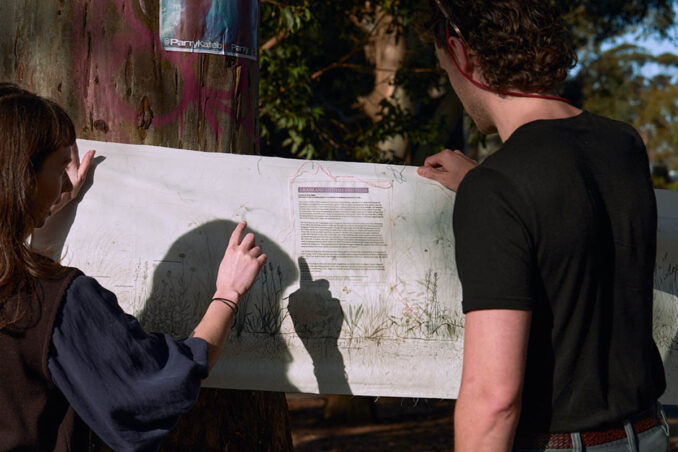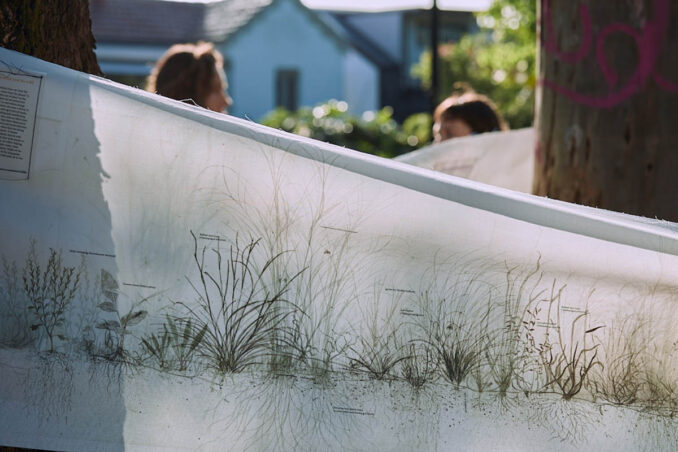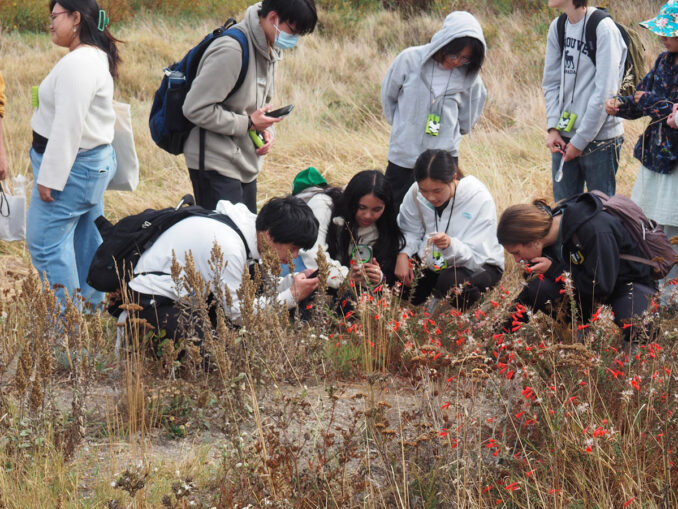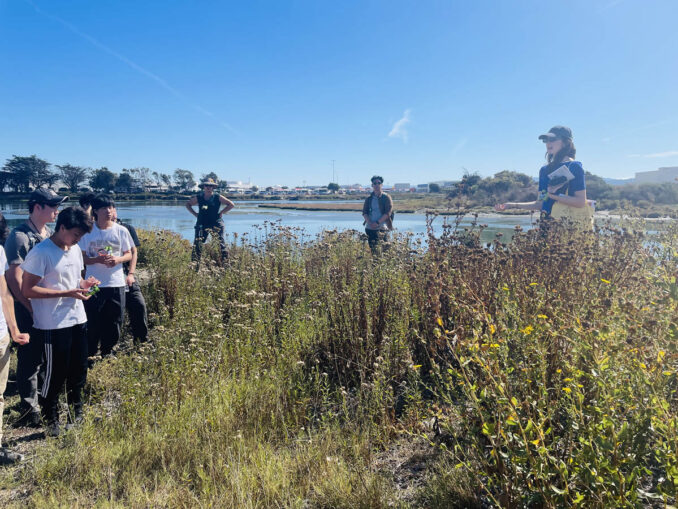
April is World Landscape Architecture and we are celebrating by profiling landscape architects from around the world. We recently had the chance to hear from Chloe Walsh.
Chloe works as a landscape architect at Hassell in Sydney, Australia. She has a diversity of experience that has seen her work on a wide range of scales from small rooftop terraces to creek restorations and large scale urban masterplans. Chloe has a love for designing with and advocating for all the living things of a place, aiming to create design that is grounded in its context.
She recently published a paper in Sustainable Urban Futures Frontiers journal that built on her master’s thesis project, exploring the need for humans to connect with their local landscapes to build resilient and biodiverse communities. In the project Chloe used hand-drawing, installation, storytelling and physical encounters to connect people with plants and landscape processes. She continues her connections with academia through sessional teaching and a research role that looks to build more biodiversity and pollinator habitat in inner Sydney.


WLA: Why did you become a landscape architect?
It is easy to post-rationalise why I chose this profession. I have always enjoyed drawing and design-type things. I also felt concerned and cared for the state of our environment, so had some sense that I wanted to work with it. At the time, however, I felt confused about the endless array of possible career trajectories and ultimately had to put in a preference at the end of year 12, so it was on a fortunate whim that I chose landscape architecture. As I have developed and refined my skills and knowledge, landscape architecture has enabled me to reconnect with many of the things I enjoyed as a child. Learning about the insects and plants in the garden that I grew up in and feeling a sense of awe and wonder about the landscapes around me has continued my love of working in this field.
WLA: How do you start the design process?
Like any landscape architect, the design process for me begins with observation and research. A site visit should always be the starting point and, if possible, more than one in varying conditions. While sometimes this is not possible, a visit to site and the experience of its context enables observations of qualities, inhabitants, and phenomena that can’t be obtained through desktop research.
From the desktop research side, my appreciation for the role of the geology of a place continues to grow. It shapes the macro forms of a landscape, influencing the kinds of soils you might be working with and therefore the ecological communities that have or will grow. The way that a particular kind of rock weathers and erodes also influences a place’s identity. Whether it’s the sharp and sometimes brittle nature of sandstone that creates cliffs and steep hills, like we have in inner Sydney, or the softer more undulating forms of shale that stretch further west, these forms shape our understanding of a place. Geology also influences the materials and therefore colours and tones of our cities that give them their character. It has the ability to connect us as designers with much larger timescales than we might otherwise, given short project deadlines and constraints. Thinking in these much bigger timeframes forces us to consider what has come before us and what we might leave behind when working with a place.


WLA: What is your approach to landscape design?
While still early in my career, my approach to design is always grounded in site. Whether that is expanding on or revealing certain qualities of a space or working in a way that aims to connect with a broader landscape. There is no tabula rasa in landscape, everything should be guided by the layers of a place and its context.
Beyond this, advocating for a deeper appreciation of the more-than-human world is something I have explored both through research and my work in the industry. I think that landscape architecture can be a catalyst for this within the broader communities in which we work, when it is done in conjunction with traditional project structures.
Hassell gave me the opportunity to lead the community engagement component of a creek restoration project in the south of San Francisco. Working together with a local community group and environmental justice organisation we developed a range of content that aimed to build connection, education and stewardship amongst local residents with their creek, with a particular focus on high school students. The two community groups are continuing this important work in San Francisco and have received further funding which is wonderful.
WLA: What is a key issue facing the landscape architecture profession?
In this current time of landscape practice, we really have all the tools at our disposal. With so many highly sophisticated softwares and methods to construct digital worlds, they can no doubt be liberating in many ways, adding efficiency and accuracy to our work. However, I have a fear that this can also remove us from the ugly, messy, real-world bits and grit of a place that actually make it rich and meaningful.
I’m sure, to some degree, this has been something designers have always faced – rarely being directly connected to a place or site during the design process. However, in this time, I feel it is perhaps easier to become disconnected from the real world, given the sophistication of digital replicas, and therefore is something we should be particularly cautious of.
WLA: Thank you to Chloe Walsh for taking the time to answer World Landscape Architecture’s questions
